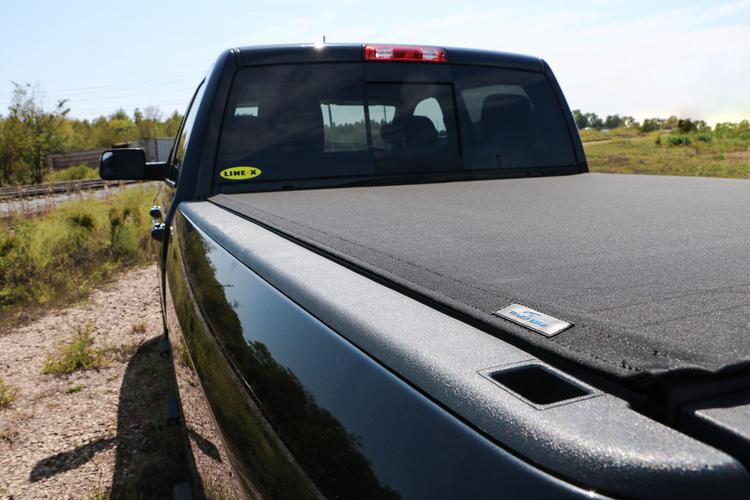What Is Double-Clutching?
The shortest description I can give is that you are matching the engine rpms to the rpms that the rear tires are going, as that rotational speed is brought into the transmission. This is needed so that you may match gears without scrapping through them, during the process of downshifting and upshifting. In my video, I show you both upshifting and downshifting.
Proper Car Transmission Technique
If you know how to properly shift a standard car manual transmission, this will be very easy. It not, you will need to understand the logic in that first, before moving on to double-clutching.
During a standard transmission shift in a car, say if you were going from 1st to 2nd gear, you will need to simply go through 1st gear until you are at a high rpm, push the clutch pedal to the floor, and change to 2nd gear, which will be at a lower rpm level. But since the two gears are so similar, the rotational speeds are almost the same, so double-clutching is not needed. Newer synchronized transmissions also help with this.
Proper Semi-Truck Upshifting Technique
During a semi-truck transmission shift, the gears are wider apart in rpm speeds, meaning that you cannot simply shift from 1st to 2nd gear easily, because the rotational speeds of those two gears are not as close together as it would be in a car.
Instead of simply pushing the clutch pedal to the floor and shifting to the next higher gear, you need to drop the clutch back out, while out of gear, so that the flywheel and clutch can touch momentarily, and the rpms of the engine and the rpms of the rotation speed of the tires can match correctly. You then push the clutch pedal back down the floor, and you can easily shift to the higher gear without scraping or grinding. It sounds a lot hard than it is, and my video above shows just how easy it is.
Proper Semi-Truck Downshifting Technique
The same holds true as the above paragraph, but instead of only releasing the clutch pedal back out as the truck is out of gear, you must rev the engine to a higher rpm level, to match that of the lower gear, because it is turning much faster. This technique is harder because if you over-rev the engine, the flywheel and clutch will be spinning faster than the rotational speed of the rear wheels and it will grind the gears. But if you under-rev the engine, you still are not high enough to match the rotational gears of the rear wheels, and you will still grind the gears. There is definitely a sweet spot and fine art to this. But once you get it, you will have it forever, the same goes for riding a bike.
Gears
As I wrote the gear diagram down below, it seemed to help me understand.
Every gear has a low and a high side, meaning lower rpms, to high turning rpms. So, you must bridge the gap in the middle, and make those rpms match more correctly so that you can have easier shifts without scraping gears.
Gear Diagram
Especially while downshifting, say if you were going from 3rd gear back down to 2nd gear, you must rev the engine back UP to the higher rpms, so that you can match the LOW side of 3rd gear to the HIGH side of 2nd gear. You must match the engine rpms as you come back down in gears.
Thank-you
Thank-you for taking the time to read my hub. Any ratings and/or comments are welcome.
Angelus
on October 26, 2018:
This is the stupidest thing i ever read. What is considered low? What is high? Since when do you press the clutch to the floor? Do you even drive a truck?
Richard William Faith
on July 12, 2016:
Variation in the technique, applicable to synchronized or non-synchronized car transmissions, and probably unsynchronized truck transmissions as well:

.
This is not a technique for racing, but rather for reducing synchronizer wear and clutch wear as well, especially of benefit to someone who owns a very old manual-transmission vehicle and desires to keep it out of the shop as much as possible.
.
I will describe the downshift technique only, as one who understands it can also apply it to upshifting with the appropriate modifications in throttle handling. However, the technique is far more important in downshifting than in upshifting.
.
1) At the moment when you wish to downshift, note what gear you are in and note the tachometer reading (if you don't have a tachometer, all is not lost. The technique can be done by ear).
2) Depress the clutch pedal to the floor and place the transmission in neutral.
3) While monitoring the engine RPM either by ear or tachometer, rev the engine to precisely the RPM you anticipate it will be running immediately after the downshift, and KEEP the engine at the new RPM by "servoing" the throttle as necessary until the ENTIRE downshift is completed (ideally, the RPM should not be allowed to vary once it has been properly established).
4) Momentarily release the clutch so as to get the clutch disk (and transmission input shaft) going at the new RPM
5) Quickly disengage the clutch and immediately place the transmission in the desired lower gear. Since the synchronizer will have essentially nothing to do, you may be surprised how easily the transmissions slips into gear!
6) Immediately release the clutch pedal and resume normal control of the throttle.
If you have performed the technique correctly, you will feel very little or no lurch upon releasing the clutch pedal at Step 6, even if you have released the clutch pedal very rapidly. If there's no lurch, there's no clutch wear.
.
It is my belief that the one single bad technique that wears out clutches prematurely (other than "riding" the clutch -- UGH, UNSPEAKABLE!) is downshifting without appropriately matching the engine RPM via the throttle. If this is not done, getting the engine up to the required new (higher) RPM is left entirely up to the clutch, and that adds up to a tremendous amount of wear. I also believe that the second-worst clutch technique for excessive wear is excessive slipping of the clutch at takeoff/breakaway. It is a skill I have practiced for many years to take off using the lowest engine RPM that will achieve a satisfactory getaway, and getting the clutch fully engaged as quickly as can be done without jerking or stalling. I have often said that anyone who NEVER stalls his car taking off is PROBABLY burning too much clutch disk.
Barbara
on April 11, 2015:
OMG you are awesome and generous in heart I'm a CDL student driver and this one helps me a lot in shifting gears it helps me more understand how to do it. Bless your heart..
Noah Franks (author)
from Anderson, SC on October 15, 2013:
Thank you @bigdee 64 for the kind words, and I'm really glad that I could help you because at the time I was very confused my own self.
bigdee 64
on October 11, 2013:
learned more off your video than i did in 3weeks of truck driving school which is 7000 dollars......waste of good money....oh well, live and learn.......thanx my man




